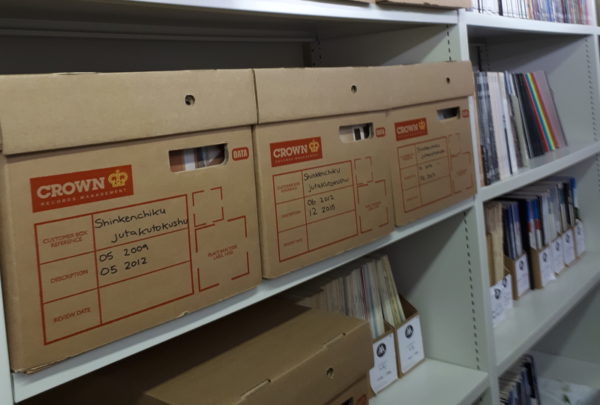
The challenge
A large NHS Trust approached Crown with a desperate need to reduce costs within their document management programme.
Historically, for speed and to keep costs to a minimum, medical records had been placed into boxes by Trust personnel and then transferred to Crown for storage. No record of contents was created by Crown, and this was all managed and maintained by Trust personnel. If a file was requested, it was barcoded upon request for access and delivered to the customer, so that a record of the activity could be recorded.
However, over time, boxes were sent into store and pre-existing files were added to new cartons by the Trust staff. The box contents were created by Trust personnel and the box sent to Crown for storage. This then created a duplicate record. When looking to retrieve, the internal Trust reference identified the same file as being in several boxes, which meant that Crown had to search several boxes to find the one file that the Trust needed.
With files being retrieved from carton and then returned back in different cartons, there was space being created in boxes that were in store, and the Trust was paying for space within boxes. All of this was inefficient and costing money.

How we helped
Crown worked with the client to identify the situation and to review the process, to eliminate the duplicate entries, make the system more efficient, and to consolidate the stock holding in an effort to reduce costs for storage.
We did this by undertaking a conversion project, transferring files from boxes, creating a full inventory of all files, removing the carton storage programme, and managing files individually, charging by the file rather than by the box.
The whole project required Crown’s personnel to remove boxes from shelves, create a full inventory of each and every file (including volume 1’s, 2’s etc.) adding up top 7 fields of reference, including a destruction review date. We then placed them into open file storage. This means that the Trust now has a full and complete inventory of all of the files being managed.
We have removed the duplicates, saving money in the searching and retrieval charges and with no ‘space’ in cartons, the Trust is only paying for the actual items managed, not the cartons in which files were previously held.
1.6 million files were transferred from box to open file storage during this programme, which took 18 months to complete. As part of the project too, we were able to identify files which could be destroyed. Working with the client, we also ‘culled’ the portfolio making sure that only necessary files were retained.
Overview
By looking at the project in a different way and by sharing our insight, the Trust has saved over £50,000 per year on managing their files compared to previous spend. At the same time, they now have a full and complete, accurate, database of files managed, and are much better placed to deliver an enhanced service to the medical teams.
Future
We are in discussions with the Trust about how to manage through retention programmes more effectively and we are supporting them in the digitisation programme. We are also working at driving efficiencies into other support functions that extend outside the current Medical Records department into the areas of Finance and Human Resources.
Crown is discussing the digital ambitions of the Trust, ranging from scanning items, through to Automated Redaction Management (ARM) for Subject Data Access Requests (SDAR’s) and we are even considering potential Enterprise Content Management (ECM) options.























